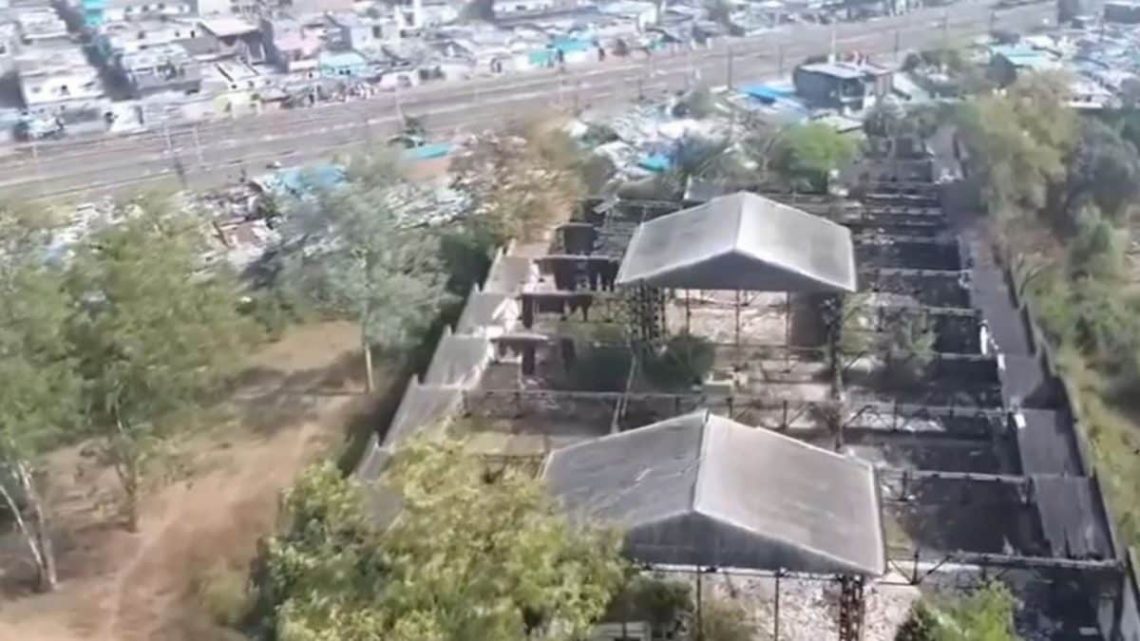On the intervening night of December 2-3, 1984, at least 5,479 people were killed and thousand others were left with serious and long-lasting health issues after highly toxic methyl isocyanate (MIC) gas leaked from the Union Carbide pesticide factory in Bhopal. It has been over 40 years since the Bhopal gas tragedy but the hazardous waste remained there till some 377 tonnes of it were loaded in 12 sealed container trucks on Wednesday and were sent out for disposal at the Pithampur industrial area in Dhar district, some 250 kms away from Bhopal.
The hazardous waste loaded trucks were escorted by police and emergency vehicles along a green corridor on Wednesday night.
The decision of disposing of the waste from the 1984 Bhopal gas tragedy, considered to be among the worst industrial disasters in the world, was taken after workers of other factories in the industrial estate near Indore voiced concern about their safety.
The move to clear the waste comes after the Madhya Pradesh High Court on December 3 rebuked authorities for not clearing the Union Carbide site in Bhopal despite directions from the Supreme Court. It then had set a four-week deadline to shift the waste, observing that even 40 years after the gas tragedy, authorities were in a “state of inertia”.
The high court bench had warned the government of contempt proceedings if its directive was not followed.
“12 container trucks carrying the waste set off on a non-stop journey around 9 pm. A green corridor has been created for the vehicles which are expected to reach Pithampur industrial area in Dhar district in seven hours,” Bhopal Gas Tragedy Relief and Rehabilitation Department Director Swatantra Kumar Singh said.
Since Sunday (December 29), around 100 people, wearing PPE kits and maintaining other a host of other strict safety measures, worked in 30-minute shifts to pack and load the waste in trucks, Singh said.
“They underwent health check-ups and were given rest every 30 minutes,” he further said.
The waste was then loaded in 12 leak-proof and fire-resistant containers with each carrying an average of 30 tonnes.
Ahead of transferring the waste, a 200-metre radius around the site was sealed. All entry points were closed and over 1,000 police officers were deployed for security.
For the safe transportation of waste, the convoy of 12 containers was moving at an average speed of 50 kilometres per hour.
The waste laden truck was transported through Bhopal, Sehore, Dewas and Indore to reach Pithampur. Apart for police, the convoy also included ambulances, doctors, fire brigade units and quick-response teams, with a total of 25 vehicles, which travelled overnight.
The 337 metric tonnes of toxic waste till now was stored at the abandoned Union Carbide factory in Bhopal.
The waste comprises five types of hazardous materials, including remnants of Sevin, a pesticide produced at the Union Carbide factory, contaminated soil, pesticide and reactor residues, and chemicals left from manufacturing processes.
As per reports, the waste includes 162 metric tonnes of soil, 92 metric tonnes of Sevin and naphthol residues, 54 metric tonnes of semi-processed pesticides, and 29 metric tonnes of reactor waste.
The site also contained highly toxic methyl isocyanate (MIC), the gas which leaked from the Union Carbide pesticide factory causing thousands of deaths.What will happen with Bhopal gas tragedy waste in Pithampur
Initially, some of the waste will be burnt at the waste disposal unit in Pithampur and the residue (ash) will be examined to find whether any harmful elements are left, a report by PTI quoted Singh as saying.
The smoke from the incinerator will pass through special four-layer filters so that the surrounding air is not polluted, he further said.
Once it is confirmed that no traces of toxic elements are left, the ash will be covered by a two-layer membrane and buried to ensure it does not come in contact with soil and water in any way.
The process will be carried out by a team of experts under the supervision of officials of the Central Pollution Control Board and State Pollution Control Board.
Singh also informed that “if everything is found to be fine, the waste will be incinerated within three months. Otherwise, it might take up to nine months.”
Meanwhile, local activists have claimed that in 2015, around 10 tonnes of Union Carbide waste was incinerated on a trial basis in Pithampur after which the soil, underground water and water sources in surrounding villages became polluted.
Singh rejected the claim, saying that the decision to dispose of the waste at Pithampur was taken only after the report of the 2015 test and all the objections were examined.
On Sunday, a large number of people took out a protest march in Pithampur to oppose the disposal of Union Carbide waste in the city which houses about 1.75 lakh.
In a bid to ease anxiety among Pithampur residents and industrialists about the Union Carbide waste disposal, the Madhya Pradesh pollution control board regional officer in Indore Shriniwas Dwivedi also issued a video statement explaining the safety precautions.
“A special shed has been created with a concrete floor. It is leak proof. No activity will be carried out that will affect the people, farm, property, land or environment,” Dwivedi said in the video message.
Operated by Ramky Enviro Engineers under CPCB guidelines, the waste disposal plant in Pithampur is the only state-of-the-art incineration plant in Madhya Pradesh.
With inputs from agencies.
Link to article –
It took 40 years, but Bhopal finally gets rid of 1984 Union Carbide gas tragedy waste



